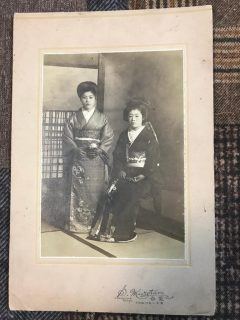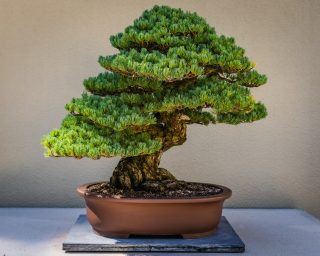Centenarian Keiko Kozaki was born before the invention of the Band-Aid, traffic lights, water skis, bubblegum, penicillin, electric blenders, the vacuum cleaner and the television. She was born in the same year as Prince Philip, past US First Lady Nancy Reagan, aviator and astronaut John Glenn, famous boxer Sugar Ray Robinson, and actress Jane Russel.
This centenarian has outlived them all.
Two years ago, Keiko became one of Japan’s 86 510 centenarians. The number has increased for the 51st year in a row, according to media organisation NHK World. Of this number, women account for 88%.
I first got to meet Keiko through my mother-in-law. She is currently living in Japan and started spending time with Keiko’s family. To me, it was fascinating to meet someone who has managed not only to survive a full century but also to enjoy good physical and mental well-being at such an advanced age. She doesn’t speak English, so her daughter, Shizuko, facilitated the interview.
Keiko’s secrets to longevity and becoming a centenarian
Having celebrated her 101st birthday on 12 January 2022, she looks like any of the 70-year-old ladies I know. She still exercises every day, probably more than many half her age. The first thing she does on waking up each day is complete 40 squats. Getting sufficient movement is very important to her.
“I try to move my legs, even when I’m sitting,” she says.
Over the course of her day, she goes for regular walks in her city of Fukui

This is a habit she shares with many documented centenarians, who generally try to avoid a sedentary lifestyle. An abundance of research supports the idea that regular movement is a precursor to living longer. According to a literature review of the studies on exercise and longevity published in the Journal of Aging Research, physical activity has been shown to reduce many major mortality risk factors. These include hypertension, Type II diabetes, dyslipidemia, coronary heart disease, stroke and cancer. Furthermore, all-cause mortality was shown to decrease by about 30% to 35% in physically active, as compared to inactive, subjects.
Keiko is also a prolific gardener – weeding, planting and taking care of her flowers.
“[Gardening] is fun and enriching,” she says. “I always look forward to the joy of blossoming. I enjoy living with nature, and I love my flowers and trees.”
This is another habit that researchers consistently associate with a longer, healthier life. Gardening is excellent for stress management and provides a positive routine and green therapy. Also, a study by researchers from Bristol University and University College London now suggests that it helps us feel better. When we come into contact with friendly bacteria in the soil, we get a dose of nature’s antidepressants. The researchers published the findings of their study in the early online edition of the journal Neuroscience.
How does this work?
Apparently, as we dig our fingers through the soil, these bacteria send messages to certain brain cells that are responsible for releasing serotonin. According to the US Cleveland Clinic, when our brain is able to release sufficient serotonin, our mood is stabilized, our gut health improves, we enjoy better-quality sleep, wounds heal faster, we have a decreased risk for bone fractures, and our libido gets a boost.
Keiko further loves to read books and newspapers
She makes a point of watching or listening to the news every day, so she knows what is going on in her country, and the world. According to Shizuko, Keiko is still able to express her thoughts clearly, and her mental faculties are as strong as ever.
Centenarian Keiko has always made a point of eating well, to nourish her body. As a young adult living in a farming village, it was rare for her to eat meat, or even fish. However, she recognizes the value of eating the plants they grew on their own land without the use of pesticides.
The science behind centenarian lifestyle and aging
Bradley Willcox M.D is professor and director of research at the Department of Geriatric Medicine in the John A Burns School of Medicine at the University of Hawaii. He’s also a principal investigator for the NIH-funded Kuakini Hawaii Lifespan and Healthspan Studies, and co-principal investigator for the Okinawa Centenarian Study. Okinawa, Japan, is recognized as one of the earth’s five Blue Zones, geographic areas of the world where inhabitants often become centenarian. They routinely live beyond the age of 100 and still enjoy good health.
Prof Willcox emphasizes that, when we eat the right food and practise caloric restriction, we can modulate the very rate of aging.
“It’s really important. The Okinawans are the only human examples that result in natural restriction with adequate nutrition, because they eat so many plants. [They] eat some meat and some fish, but it’s [mostly] plants. They were not consciously practising caloric restriction. They also are very active.”
In an article for the Hawaii Reporter, he says: “What we’ve discovered is that certain micronutrients found in Okinawan sweet potatoes, turmeric and marine-based carotenoid-rich foods, such as seaweeds and kelp, are particularly potent in this regard. The compounds in these foods that are especially potent in stimulating the healthy aging process include anthocyanins (in sweet potatoes), curcumin (in turmeric) and astaxanthin (found in marine-based foods and algae). In scientific terms, these nutrients upregulate the FOXO3 gene – a major nodal gene in aging-related biological pathways, which is associated with disease prevention.
Caloric restriction and becoming a centenarian
“In a sense, these compounds trigger our biological systems into mimicking an ancient survival mechanism called caloric restriction. Caloric restriction has been unequivocally proven to make organisms live longer. It sounds counterintuitive, but the less you eat (up to about 30% less than usual calories), the longer you live, as long as you maintain a diet adequate in micronutrients. A diet that contains compounds that turn on caloric-restriction biological mechanisms may also make you live longer and healthier. In other words, if you can turn on the same genes that caloric restriction activates through the consumption of dietary compounds that mimic caloric restriction’s biological effects (“CR mimetics”), you may get the benefits of caloric restriction without the deprivation. Our studies and those of others have shown strong support for this.”
For the moment, the Okinawan sweet potato may have to be imported, but you can easily find turmeric in your local supermarket. “Getting a healthy dose of astaxanthin can be obtained by eating salmon and other seafood with a pink coloration, such as shrimp,” adds Prof Willcox. “You can also purchase astaxanthin as a supplement.”
Family and hara hachi bu
In addition to enjoying foods that are both nutrient-rich and calorie-poor, the Okinawans are masters of mindful eating. On the island, many of the older residents practise hara hachi bu, which translates as eating only until you are 80% full. When they sit down for a meal, they say the words out loud, both as a blessing and a reminder to themselves not to overeat.
At 101, Keiko is still an active presence in the life of her family
She enjoys playing with her great-grandchildren and cooking for them. She often credits her family, loved ones and community among the reasons for her old age, and says she appreciates still having friends to talk with.
Prof Willcox notes: “We are communal creatures, who typically derive much of the joy in our lives from our family and friends.”
Young Okinawans don’t follow the example of their centenarian elders
Worryingly, however, Okinawa’s young people are among the most obese of all Japanese. Dr Makoto Suzuki, a cardiologist and gerontologist who – along with Prof Willcox and his
brother Dr Craig Willcox, PhD – co-authored The Okinawa Program, a best-selling book that brought the Okinawan health regime to international attention two years ago, explains that, with the presence of Americans on the island, following World War II, came foreign food items such as canned meat. The standard of living rose, and rates of physical exercise dropped.

“The local lifestyle began to change,” says Dr Suzuki. “Young people are dying earlier, while the elderly live longer. The trend is very clear.”
The trends show that, rather than participate in their elders’ spartan, low-carbohydrate diet of vegetables and little meat, young people would rather opt for a burger and fries.
Carbs increase calorie intake
“[It’s their] lifestyle,” says Prof Willcox.“[The] younger people are less active and eating more poorly. They use using modern-day transport, not walking, driving or taking the bus. The main diet is carbohydrate.
Specifically, they are eating bad carbs. They have changed from sweet potatoes, [which have] a low glycemic index, [and are] calorie-poor and nutrient-rich, to simpler carbohydrates and also more processed food…There has been a shift up of about 400 calories a day.”
The life force that survived 101 years
Shizuko explains that her mother has by no means led an easy life. Soon after Keiko was married in the 1940s, WWII was under way and the family had to evacuate. As a result, she lost her childhood home in Tokyo, as well as her new house with her husband’s family in Saitama. Between the ages of 21 and 30, she would give birth to five children, only three of whom survived. In addition, Keiko was a young mother and wife at a time when most of Japan’s men had to go to war.
“[The men] died or returned wounded,” Shizuko says. “Many women and children died in air raids and bombings. Old people too.”
Despite the hardships and heartbreak, however, she lived a mostly self-sufficient life, growing rice, vegetables and other crops, Shizuko says. “She did whatever she could do, including sericulture (the process of cultivating silkworms for the extraction of silk), spinning and sewing, and made whatever she could. At times, [my mother] had a family of more than 10 people and took care of everything, including food, clothing and shelter.
I [realised] that behind the simple replies [to the interview questions] was a life force that had survived 101 years. And I believe that it was because of her wisdom, hard work and compassion for others that she survived and protected the next generation.”
Keiko’s top tips for longevity
- Do work that has a purpose.
- Participate in physical exercise and movement.
- Chew each mouthful 30 times.
- Eat some meat, fish, little fried food, lots of vegetables, fruits, some milk and dairy products, yoghurt, honey, wine.
- Have a good measure of curiosity.
- Use what you have with ingenuity and skill.
- Ask or look up what you want to know or what you don’t know.
- Keep a daily diary.
- Make a list of places where you want to go, books you want to read, things you want to see and do, and mark them off as you accomplish them.
- Meet people and spend time making conversation with them.
- Be kind.
- Enjoy living with nature.
- Compose poems, tanka and haiku.
- Always try to do your own thing.
- Always be neat and neatly groomed.
- Have friends to talk to.
- Have good social security and adequate medical care.
“Above all, be at peace. Don’t think only about yourself; think about the feelings of others. It’s important to help each other – I remember being told that all the time, especially by my mother.”




![women [longevity live]](https://longevitylive.com/wp-content/uploads/2020/01/photo-of-women-walking-down-the-street-1116984-100x100.jpg)










